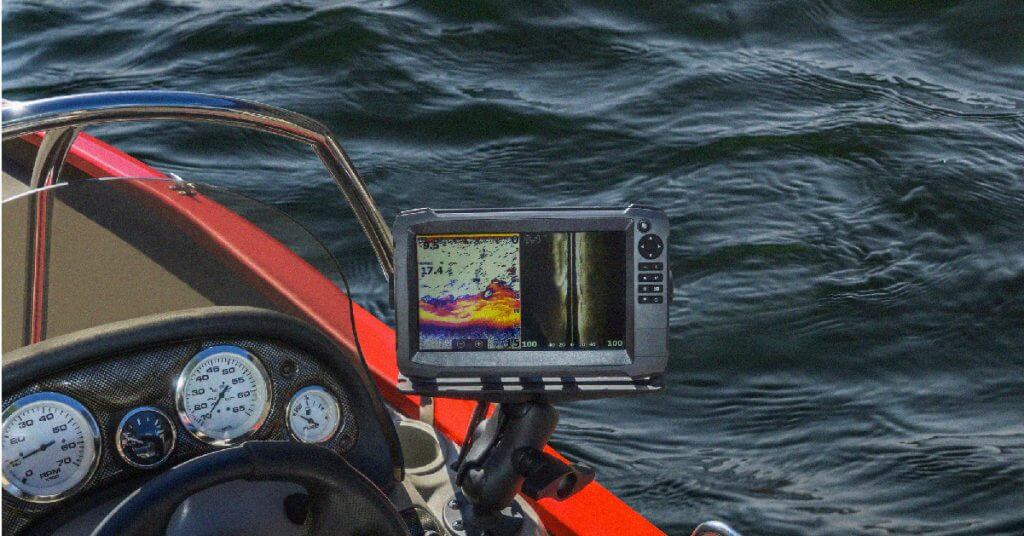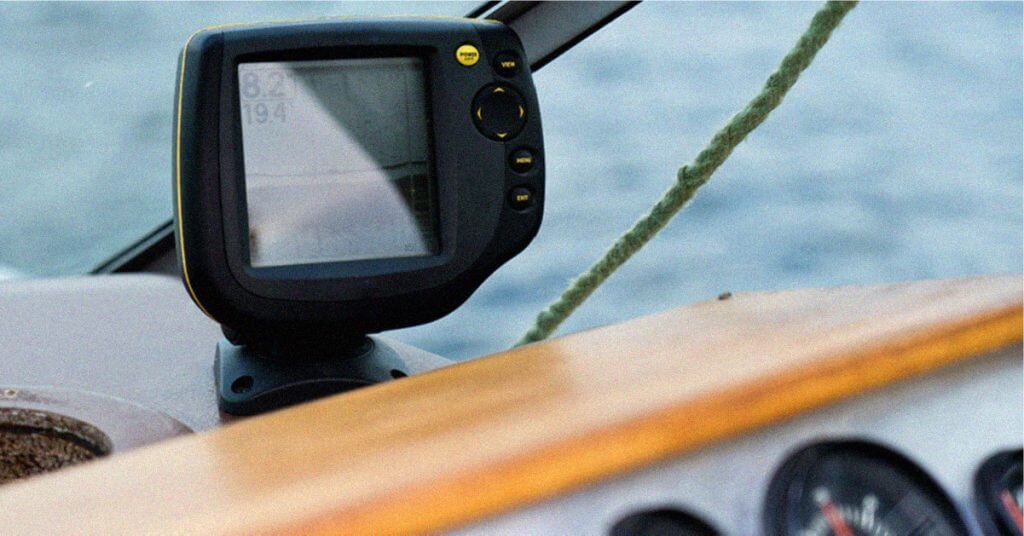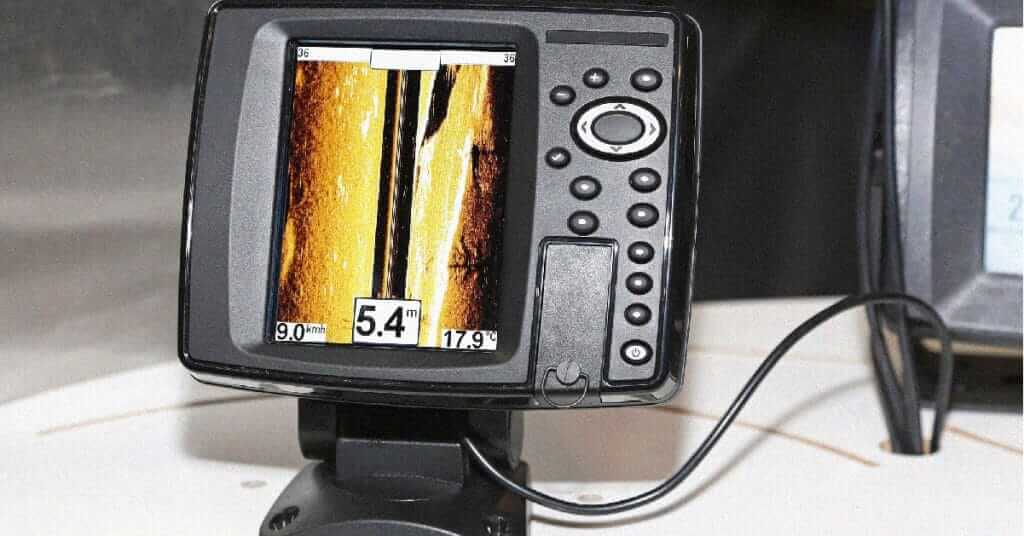Fish finders are well worth the cost if you plan to use them.
They might seem like an expensive investment upfront but they can make the overall fishing experience a lot more fun in the long run.
Simply put, they are an additional electronic tool for your boat or kayak that helps you to catch more fish.
However, first-time buyers might get confused by the wide range of opinions in the market.
And after all, we humans have been catching fish since the dawn of civilization with just our instincts.
So, are fish finders worth it?
I’m old school but even I’ve used dozens of fish finders and found that 99% of them are worth the money spent. Let’s see if you agree.
- Are Fish Finders Worth the Money? 12 Reasons Why They Are
- 1. Fish Finders Are Time Savers
- 2. They Help You to See What Lies Beneath
- 3. Acts as a Depth Finder
- 4. Helps in Finding Bait Fish
- 5. Allows You to Navigate and Mark Your Spot
- 6. Tells You the Water Temperature
- 7. Helps You to Mark the Thermocline
- 8. Added Safety
- 9. Provides the Advantage of Chirp Technology
- 10. They Are Portable and Easy to Use
- 11. Fish Finders Are Versatile
- 12. Various Features
- 5 Reasons a Fish Finder Isn't Worth the Money
- FAQs
- Final Thoughts
Are Fish Finders Worth the Money? 12 Reasons Why They Are
In my experience, these are the main advantages of using fishfinders.
1. Fish Finders Are Time Savers

To make the best use of your trip, you need to be where the fish are.
And even with your superb angling skills, you will be wasting your time by casting in spots where there are no fish.
Since the sonar in a fish finder allows you to read the water and locate fish it’s a practical tool for both saltwater and freshwater fishing.
It’s also helpful in identifying “hot spots”- places where the fish are bunched up in a school.
For fishing guides, a fish finder can be a great tool for guiding their clients to the best fishing locations without wasting time.
Even for recreational anglers, it saves you from those frustrating hours of fruitless waiting.
2. They Help You to See What Lies Beneath

One great feature of fish finders is they provide detailed information on the type of structures below the surface.
A proper understanding of the bottom contour map is a big advantage when it comes to casting in deep waters.
For example, the fish finder can help you locate a hole in a channel that can shelter schools of fish.
As we know, some species prefer structures like ridges, weeds, submerged wood, cribs, etc which act as safe haven for them.
Once you know the nature of the bottom you can cast the baits more effectively.
If you consider bass, they prefer shallow water in cooler conditions. In the warmer months, they venture deeper.
By knowing the depth and the bottom contour, you can target them better.
3. Acts as a Depth Finder

The fish finder acts as a water depth finder too.
You get a digital readout of the water depth which makes it easier to make the right choices.
Know that, you’re more likely to find fish in areas where the depth changes quickly.
Moreover, different species of fish prefer to stay at different depths. Knowing the depth allows you to cast the line properly.
Also, fish can stay at a particular depth during the period in winter.
So, knowing the depth accurately can be helpful during ice fishing trips.
4. Helps in Finding Bait Fish

The secret of a successful angling trip is to track the baitfish that the bass are after.
By identifying the prey, you can drop the lure where the school of baitfish is located.
In most cases, these schools are the prime target for the bigger fish like striped bass and bonitos.
The fish finder will allow you to locate these suspended schools and also point out if the larger fish are interested.
Keep in mind bass eats different baits depending on the season. During summer they prefer shad. In the cooler months, they go after crawfish.
5. Allows You to Navigate and Mark Your Spot

Modern fish finders allow you to mark a spot so that you can easily come back to it.
The built-in GPS will track a course that you can follow anytime you want.
In reality, reaching the same spot after a year or two based on your memory alone isn’t an easy task.
I have used the device during freshwater fishing to head back to locations that held a bunch of fish.
Admittedly, I could have done that with my smartphone. But having a device dedicated to the purpose has its own advantages.
This feature allows you to save a lot of time and hit the same location without fail.
In addition, you can also mark spots that might have good potential in a different season. Then, use them as waypoints or reference points during a return trip.
Many anglers use waypoints during fishing tournaments to get a faster and higher catch.
Beyond that, you can add notes along with each waypoint that can act as a fishing journal.
6. Tells You the Water Temperature
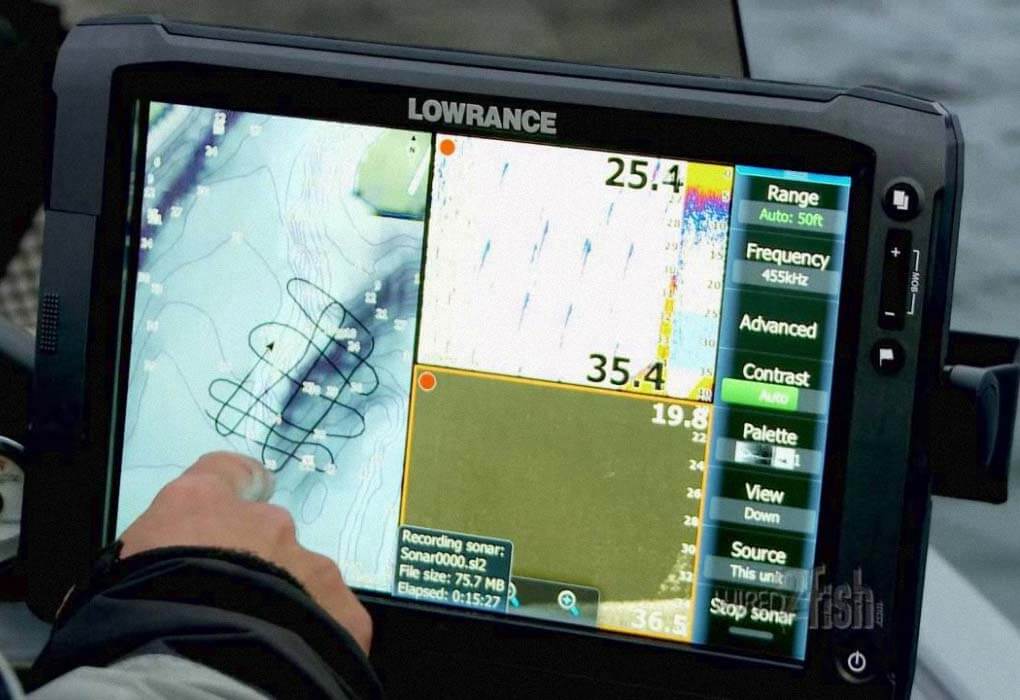
Fishfinders also have the ability to keep you informed about the water temperature.
Different fish species thrive in different water temperatures and it also depends on the season.
Many rivers are colder at the point of origin. This makes the water ideal for species like trout.
As the river flows down and widens, the water turns warmer. Fish species like smallmouth bass are more common in these waters.
Once you know the water temperature, you will have a better idea of how the fish will respond.
7. Helps You to Mark the Thermocline

A water body may have layers of water that have different temperatures.
A thermocline is a layer with changing temperatures that exists between the warmer water layers at the top and cooler layers at the bottom.
As summer progresses, the area below the thermocline becomes hostile for the fish. This is due to the fact that the oxygen levels in the water decrease.
So, it’s best for anglers to try and find fish in the active zone above the thermocline.
With a fish finder, you can locate the thermocline more easily by tracking the changing water temperatures.
8. Added Safety
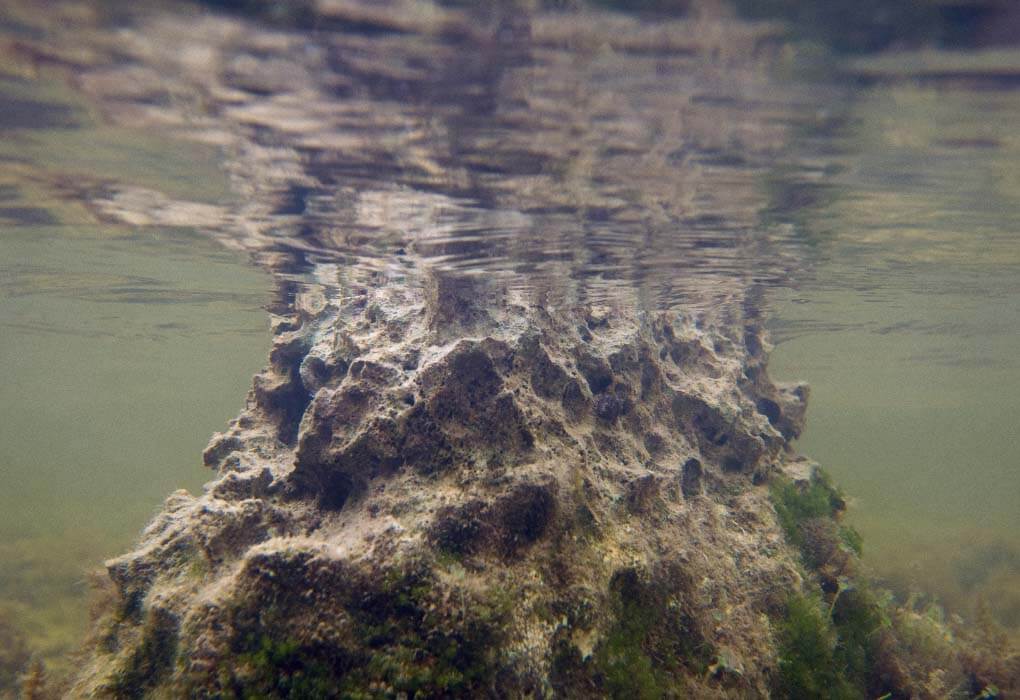
The fishfinder’s ability to map the bottom and get accurate depth reading also adds an extra safety net over your fishing trips.
The GPS is also helpful to prevent you from getting lost in a large waterbody.
Moving through an unknown stretch of water without knowing what’s under you can be risky.
Whether you are on a boat or a canoe, identifying the underwater hazards like rocks can help you to navigate safely.
9. Provides the Advantage of Chirp Technology

Modern fish finders use CHIRP or Compressed High-Intensity Radiated Pulse technology. It uses a wide band of low and high frequencies to provide better information about the fish.
The generated high-resolution image provides accurate details about the bottom.
CHIRP helps in identifying fish species and also tells you how the fish are responding to the bait.
It also delivers better bottom tracking at higher depth and speed.
Besides, it also cuts down the noise. That allows you to see through false targets and get better image separation.
10. They Are Portable and Easy to Use
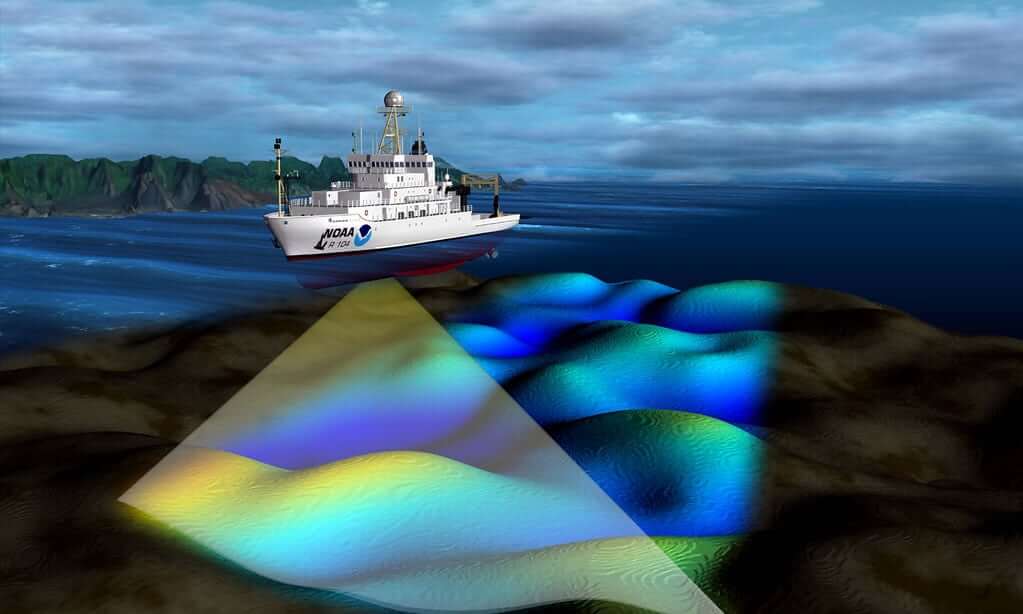
A big advantage of portable fish finders is, they are super portable and easy to use.
Once the batteries are charged, you are good to go. Besides, you can use your smartphone as a screen for the device.
Moreover, you don’t need any internet or mobile signal to operate the device. These sonars use a Bluetooth or WiFi connection for connectivity.
The device acts as a WiFi hotspot and generates its own signal. Even the GPS function will operate by direct connectivity with the satellites.
11. Fish Finders Are Versatile
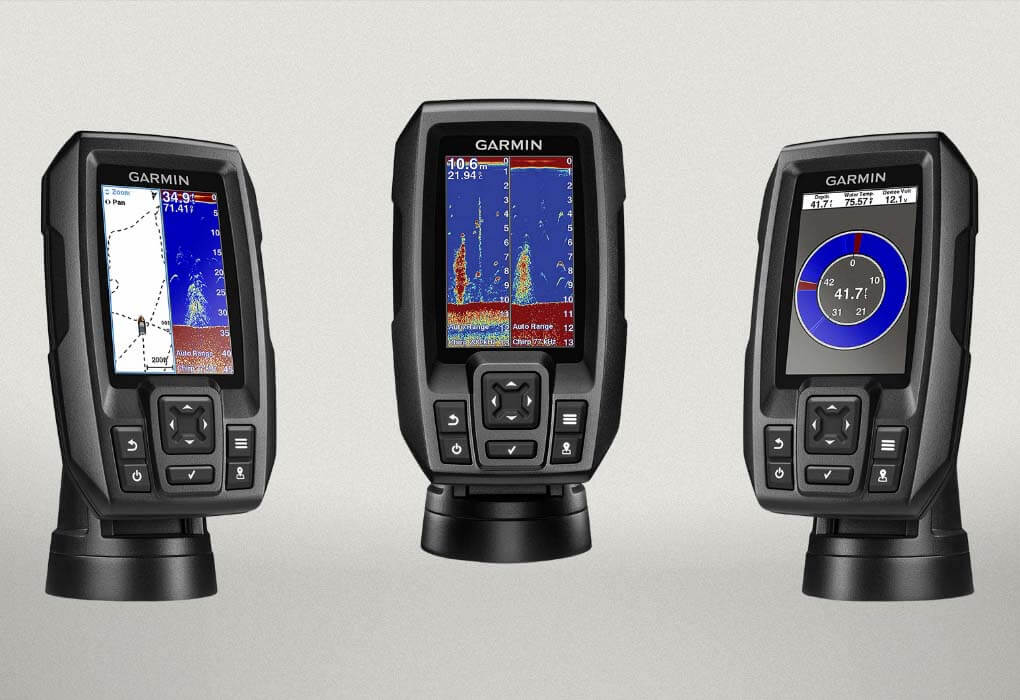
While advanced fish finders are attached to a boat, they are not the only option you can pick.
Fishfinders come with a wide range of features and are suitable for all types of fishing trips.
And even if you’re on a budget, you will find some fish finders that offer excellent value.
You can use these devices for boat fishing, shore fishing, kayak fishing, and ice fishing.
In addition, they can be used in saltwater, as well as freshwater.
Also, castable units like the Garmin Striker are super easy to use and great for occasional anglers who aren’t so tech-savvy.
That said every angler has different needs. So you need to pick the right unit based on your requirements.
12. Various Features

Fishfinders also come with an array of useful features that can make angling easier for you.
In fact, advanced fish finders are also using down imaging and side imaging sonars that deliver more information in deeper waters.
In some models, you can fine-tune the sonar frequency to improve range and target detection capacity. Fishfinders like the Humminbird Helix 5 come with an Autochart feature.
This allows you to create your own underwater maps for small lakes that you can share with your fishing buddies.
Some devices also allow you to keep the boat at specific depths all through the day. Many castable fish finders or kayak fish finders come with a light and a fish alarm.
They are a great help when you are planning to lure walleyes at night.
5 Reasons a Fish Finder Isn’t Worth the Money
Time to take a look at some reasons that might make you walk away from fishfinders.
1. They Can Be Too Complex
Advanced fish finders are complex devices that need proper installation and configuration. I have seen many senior anglers refusing to make the shift because of the complexities of a high-end device.
If you’re a first-time user, you need to spend some time with the manufacturer’s instructions to understand how the device functions.
The device may have multiple settings for adjusting the sensitivity and transducer outputs.
When you know how to use it and interpret the data from the fishfinder, only then will you be able to utilize them properly.
Fact is, these skills cannot be gained overnight and need practice.
2. There Are Too Many Varieties
With a wide variety of devices in the market, it can be easy for a first-time buyer to get confused. The choice will depend on whether you’re bank fishing or boat fishing.
In addition, you need to consider whether you prefer freshwater or saltwater fishing.
To choose the best fish finder on the market, you have to keep a few factors in mind. In addition, you need to read the specs and understand if the device works for you.
3. They Are Expensive
As with everything else, for fish finders too, price is directly related to quality.
You will have to pay a higher price to pick a model with advanced features.
And the difference in the sonar quality between the high-end and low-end models is nothing short of dramatic.
In case you are an occasional angler, investing in a fish finder may not be the right decision.
Firstly, you need to pick a fish finder that offers the right performance based on your angling needs.
Cheaper units will struggle to deliver the information that you need. At the other end of the spectrum, there are high-priced units loaded with features
Bottom line, before you spend a fortune, choose a fish finder that offers the right value.
4. Traditional Fish Finders Have Limitations
Many fish finders with a single sonar beam not only have low depth penetration but do not deliver the best image quality either.
What’s more, some pelagic fish like tuna have small swim bladders.
This makes the reflection of the traditional sonar beams tough. And since they move swiftly, detection gets even more difficult.
So even if the tuna is on a feeding frenzy below your boat, the sonar might miss them.
So, you need to shift to a more expensive high-end transducer for better results. That brings us back to the other aspect of the equation- budget.
5. It Might Degrade Your Skills
One of the basic skills of an angler is the ability to read the water.
Let’s assume you rely heavily on a top-end fish finder from a brand like Garmin or Lowrance. Then you may find it difficult to catch fish if the device runs out of power or breaks down in the middle of a trip.
So, combining technology with your skills is the best option. If you’re a newbie angler, I would advise you to sharpen your basic skills.
Then, even if the device breaks down, you will still be able to catch fish.
FAQs
Is a fish finder worth it?
Actually, that depends on your requirements. If you know how to use a new fishfinder, they are an extremely useful device that can pinpoint the fish’s location.
However, you need to purchase the right unit that matches your angling needs.
That way, fish finders can be helpful tools for professional as well as newbie anglers.
Does sonar bother fish?
There’s no conclusive evidence that sonar can bother fish.
Recently, a study was conducted on rainbow trout by using a high-intensity, low-frequency sonar beam.
The study indicated that the fish experienced a temporary decline in hearing sensitivity. The internal organs of the fish indicated no damage.
However, the results may not be the same for other fish species.
What is the difference between sonar and a fish finder?
Fishfinders use a small sonar pulse for a down scan of the water column below the boat. On the other hand, sonar technology is a general technical term.
A fishing sonar is a high-performance device that offers more detailed scanning from all directions.
They are suited for larger boats and commercial fishing activities.
Final Thoughts
So, are fish finders worth it?
For me, fish finders are worth the investment.
Surely, you’ll be able to catch fish without them. But there’s no point in not using the technology to stay informed and improve your game.
And once you know how to use them right, they can help you bring in a good haul.
However, don’t get completely dependent on technology.
Remember, while trying out new technology, you’ll surely come across various beliefs and misconceptions.
So, it’s important to understand how these devices work and then pick the best option.
That’s all for now. I’d love to know your thoughts.

